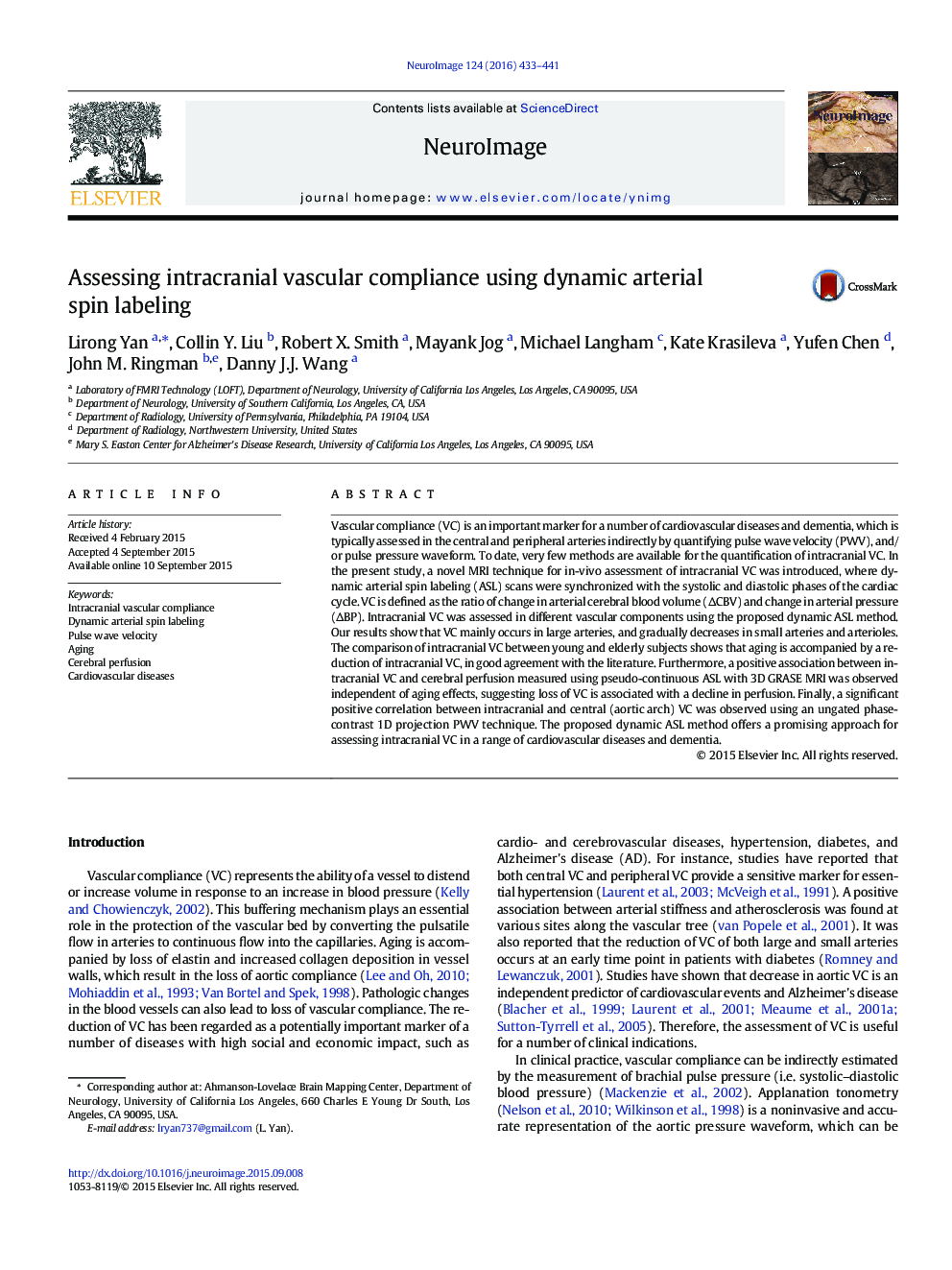| Article ID | Journal | Published Year | Pages | File Type |
|---|---|---|---|---|
| 6024298 | NeuroImage | 2016 | 9 Pages |
Abstract
Vascular compliance (VC) is an important marker for a number of cardiovascular diseases and dementia, which is typically assessed in the central and peripheral arteries indirectly by quantifying pulse wave velocity (PWV), and/or pulse pressure waveform. To date, very few methods are available for the quantification of intracranial VC. In the present study, a novel MRI technique for in-vivo assessment of intracranial VC was introduced, where dynamic arterial spin labeling (ASL) scans were synchronized with the systolic and diastolic phases of the cardiac cycle. VC is defined as the ratio of change in arterial cerebral blood volume (ÎCBV) and change in arterial pressure (ÎBP). Intracranial VC was assessed in different vascular components using the proposed dynamic ASL method. Our results show that VC mainly occurs in large arteries, and gradually decreases in small arteries and arterioles. The comparison of intracranial VC between young and elderly subjects shows that aging is accompanied by a reduction of intracranial VC, in good agreement with the literature. Furthermore, a positive association between intracranial VC and cerebral perfusion measured using pseudo-continuous ASL with 3D GRASE MRI was observed independent of aging effects, suggesting loss of VC is associated with a decline in perfusion. Finally, a significant positive correlation between intracranial and central (aortic arch) VC was observed using an ungated phase-contrast 1D projection PWV technique. The proposed dynamic ASL method offers a promising approach for assessing intracranial VC in a range of cardiovascular diseases and dementia.
Related Topics
Life Sciences
Neuroscience
Cognitive Neuroscience
Authors
Lirong Yan, Collin Y. Liu, Robert X. Smith, Mayank Jog, Michael Langham, Kate Krasileva, Yufen Chen, John M. Ringman, Danny J.J. Wang,
